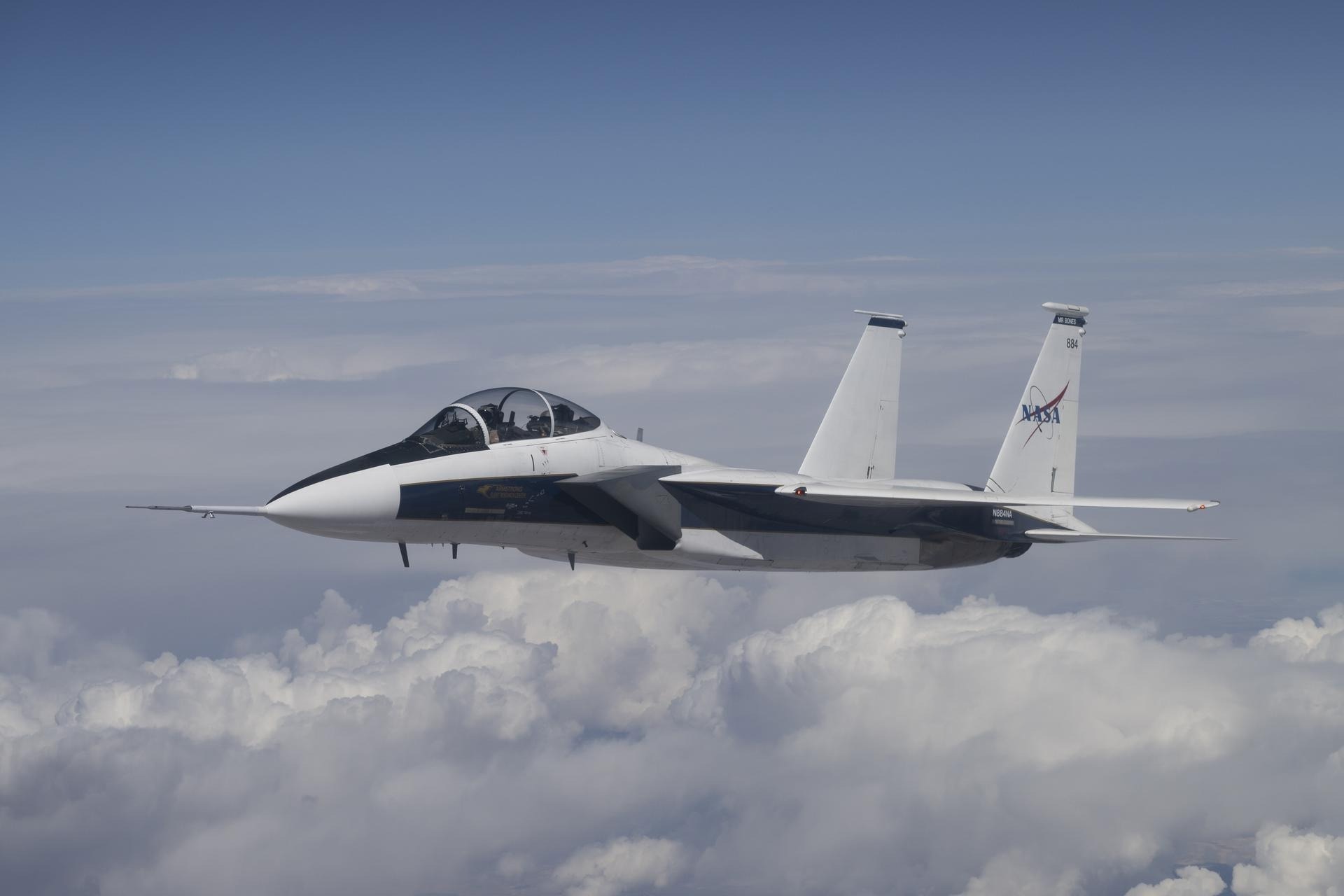
Image Credit: NASA/Jim Ross
These sensors are a key component of NASA’s X-59 Quiet Supersonic Technology (QueSST) aircraft, which aims to dramatically reduce the sonic boom - the loud, jarring noise typically produced when an aircraft breaks the sound barrier. By reshaping and softening these shock waves, NASA is working to show that supersonic flight over land can meet future noise regulations.
When an aircraft exceeds the speed of sound, it generates shock waves that travel through the atmosphere and hit the ground as sonic booms. These booms are one of the biggest obstacles to commercial supersonic travel over populated areas. The X-59 is engineered to reshape these waves so that people on the ground hear a much softer "thump" instead of a boom.
To get there, researchers need a detailed understanding of how shock waves behave, especially in the near field, the area close to the aircraft where these waves first form.
In earlier studies, NASA used specialized probes mounted on chase aircraft to gather shockwave data. While that approach worked, it revealed a need for sensors with even higher sensitivity, quicker response times, and greater reliability.
Engineers have since developed a new generation of cone-shaped shock-sensing probes, each equipped with high-response pressure sensors. These are designed to capture fine-scale pressure changes that occur when shock waves form and move around the aircraft. Once gathered, the data is compared to computational models to both validate design assumptions and deepen understanding of shockwave dynamics.
Calibrating for Precision
Calibrating these new sensors required a meticulous, tightly controlled process. Built from materials selected for their durability and responsiveness, the sensors are designed to perform across a wide frequency range. That makes them capable of capturing the quick pressure swings that happen during supersonic flight.
To test them, NASA flew a series of controlled missions using its F/A-18 research jet. The flight paths were specifically designed to generate consistent, predictable shockwave signatures, mirroring what the X-59 is expected to produce.
During each flight, the shock-sensing probes collected pressure data in real time. Researchers then analyzed this data alongside both ground-based reference standards and detailed simulations. This comparison helped evaluate how linear, responsive, and sensitive the sensors were. From there, calibration coefficients were calculated to fine-tune the sensor output to align precisely with real-world shockwave conditions.
It wasn’t a one-and-done process. Each test flight generated data that was compared against theoretical models, and any discrepancies led to adjustments in sensor calibration. This iterative loop ensured that by the end of the campaign, the sensors were finely tuned and ready for high-stakes testing.
To ensure reliability, NASA also implemented a redundancy system. Identical shock-sensing probes were installed on two separate F-15 aircraft - one primary and one backup. This ensured that if one system had a problem, the other could continue collecting data without interruption.
What the Data Showed
The results were encouraging. The sensors recorded shockwave data with high accuracy, and the measurements lined up closely with model predictions. Their response time was fast enough to track the sharp pressure jumps typical of shockwave events, confirming that they’re ready for real-world supersonic flight.
The close agreement between sensor data and simulations validates both the sensor technology and NASA’s underlying aerodynamic models. It also provides valuable insights into how shock waves behave around the aircraft and interact with the atmosphere - knowledge that’s essential for reducing the impact of sonic booms.
The redundancy approach also held up well. Both probes performed nearly identically, reinforcing their reliability and consistency. This means future flight tests can proceed with confidence, knowing that a backup system is always in place.
Conclusion
The successful calibration marks a key milestone in NASA’s quiet supersonic research. These sensors aren’t just collecting data - they’re shaping the future of aviation. With accurate, real-time shockwave measurements now possible, NASA is better equipped than ever to push forward with the X-59 project.
Each step brings us closer to proving that supersonic travel over land can be quiet, safe, and practical.